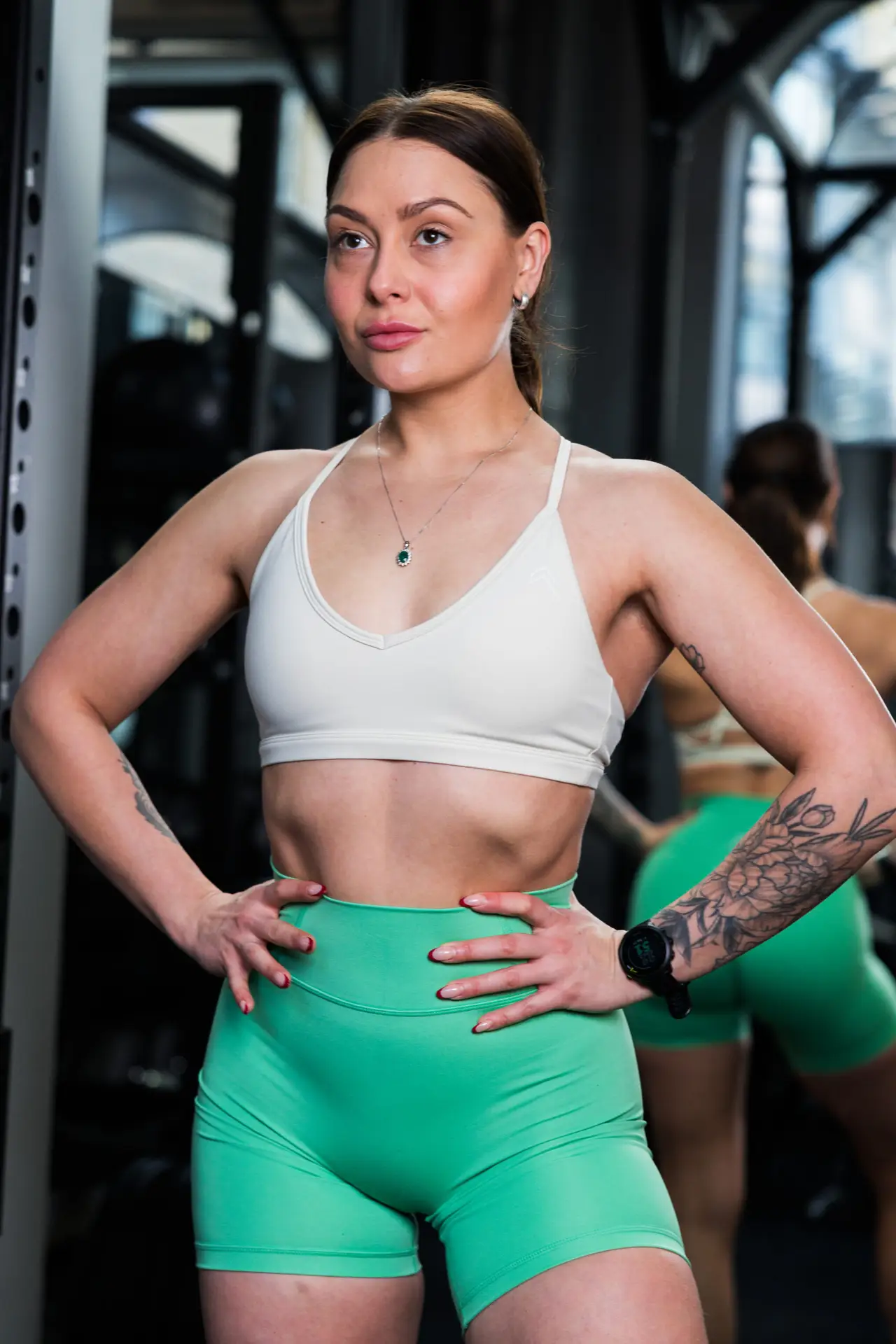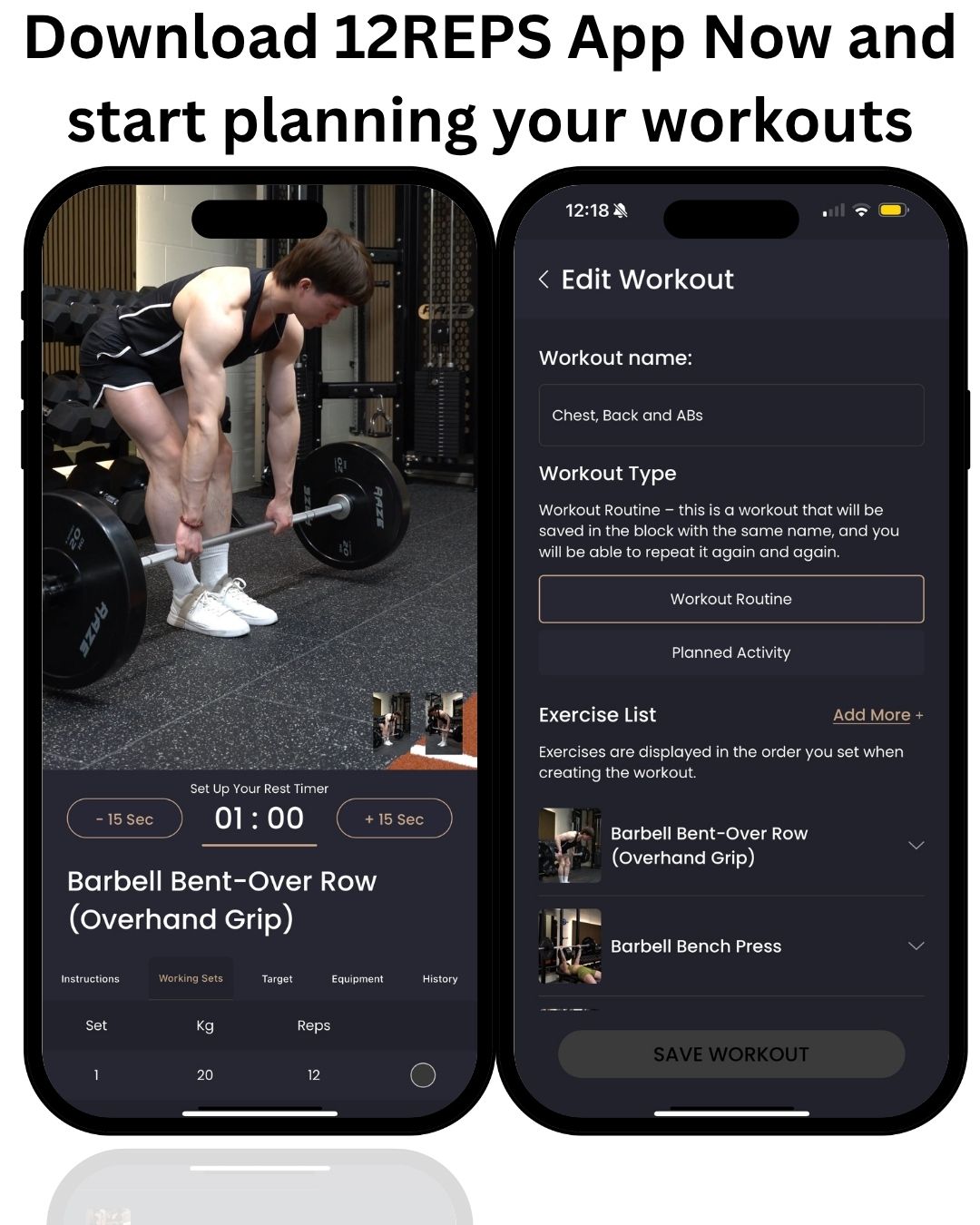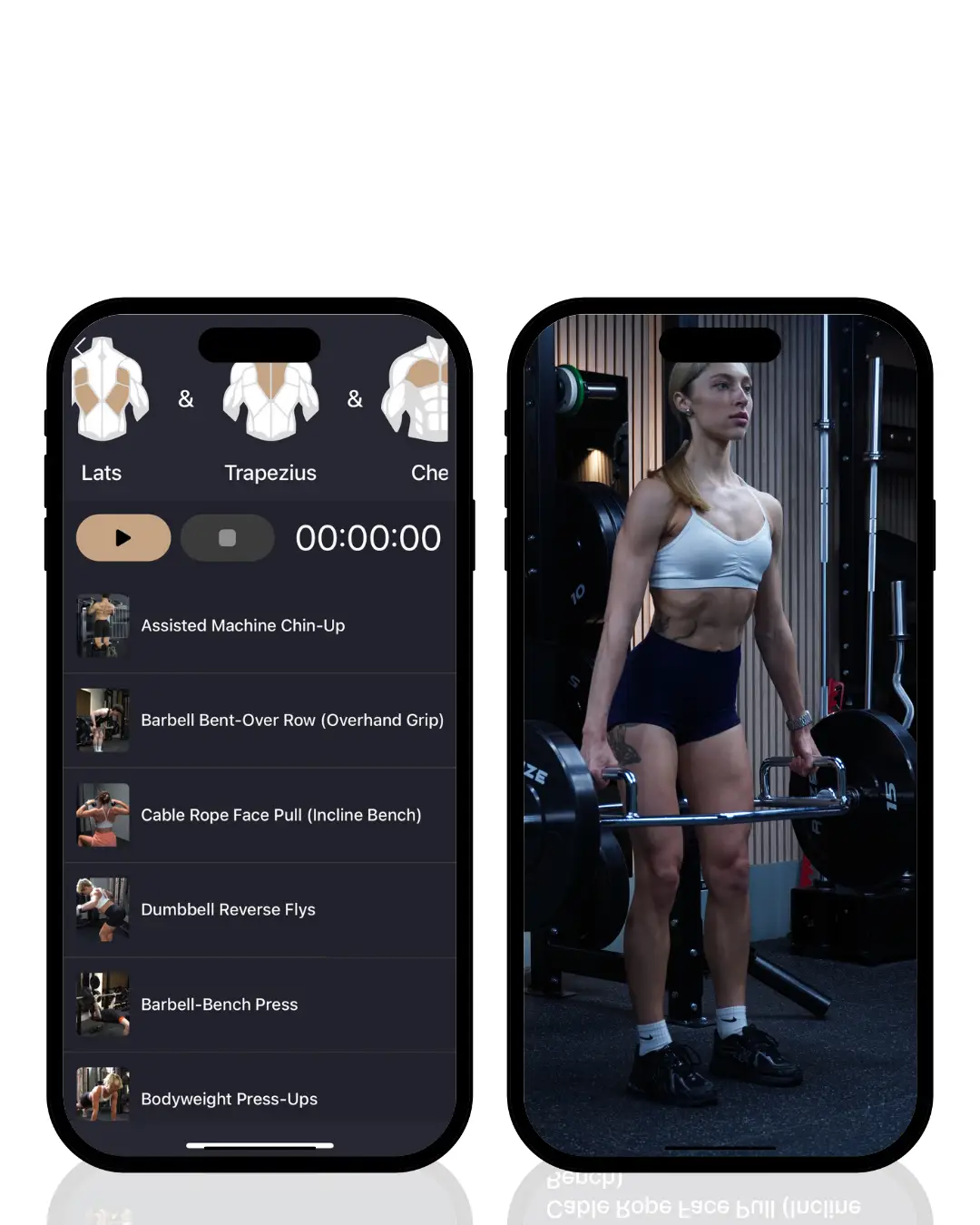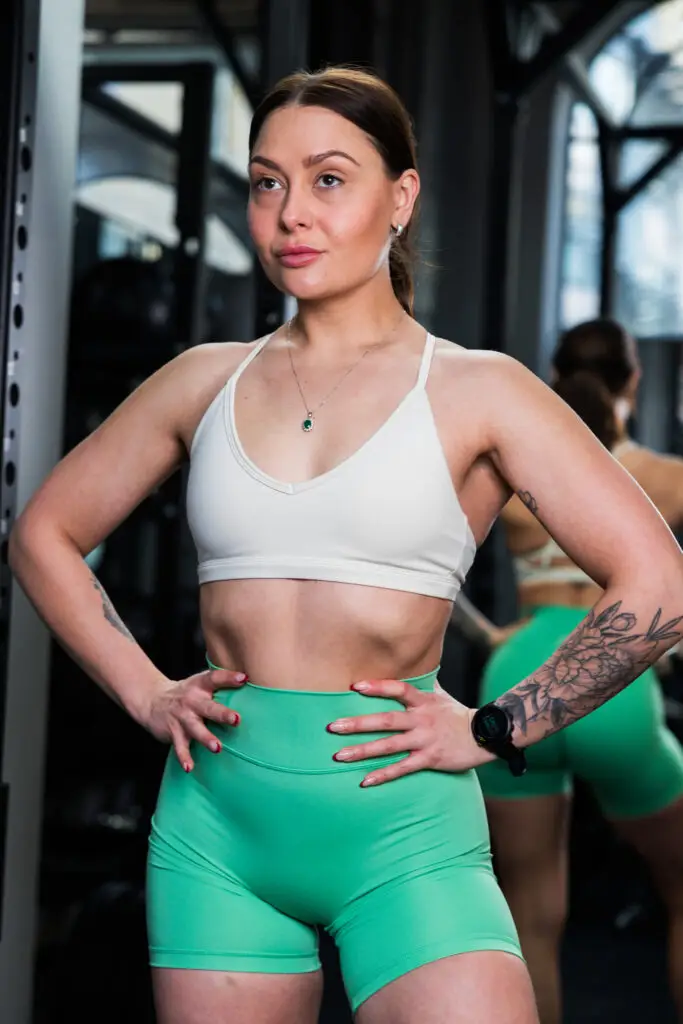By Will Duru, BSc (Hons) Sport and Exercise Science, Award-winning Personal Trainer with over 10 years of experience in strength training and optimising recovery.
For women entering their thirties and beyond, strength training becomes not just a fitness choice, but a crucial investment in long-term health, vitality, and independence. As we age, our bodies undergo significant physiological changes that make resistance training more important than ever before. The decline in muscle mass, known as sarcopenia, begins as early as age 30, with women losing approximately 3-8% of their muscle mass per decade [1]. Additionally, bone density starts to decrease, particularly after menopause, making weight-bearing exercises essential for preventing osteoporosis and fractures [2].
The 12Reps app emerges as an innovative solution specifically designed to address these challenges through AI-powered, personalised strength training programs. This cutting-edge application utilises advanced algorithms to create customised workout plans that adapt to your goals, available equipment, and fitness level [3]. What sets 12Reps apart is its intelligent approach to exercise selection and progression, featuring an interactive body diagram and detailed workout videos that ensure proper form and maximum effectiveness [4].
This comprehensive guide presents a scientifically-backed strength training program specifically tailored for women aged 30 and above, utilising the powerful features of the 12Reps app. The program follows a proven push/pull/legs and core split, designed to be performed three times per week using readily available gym equipment, including dumbbells, TRX suspension trainers, kettlebells, and standard gym machines. Each workout is structured with 4 sets of 10-12 repetitions, optimised for building lean muscle mass, improving bone density, and enhancing overall functional strength.

Why Strength Training is Crucial for Women 30+
Hormonal Changes and Their Impact
Women in their thirties begin experiencing subtle but significant hormonal fluctuations that profoundly impact their body composition, energy levels, and overall health. Estrogen and progesterone levels start to fluctuate, particularly after childbirth, leading to changes in metabolism, fat distribution, and muscle maintenance [5]. These hormonal shifts can result in increased abdominal fat storage, decreased muscle mass, and reduced metabolic rate, making weight management more challenging than in previous decades.
Strength training serves as a powerful countermeasure to these hormonal changes. Regular resistance exercise helps regulate insulin sensitivity, which becomes increasingly important as women age and face higher risks of metabolic disorders [6]. The muscle-building effects of strength training also boost resting metabolic rate, as muscle tissue burns significantly more calories at rest compared to fat tissue. This metabolic advantage becomes crucial for maintaining a healthy weight and body composition throughout the ageing process.
Bone Health and Osteoporosis Prevention
One of the most compelling reasons for women over 30 to engage in strength training is its profound impact on bone health. Peak bone mass is typically achieved by age 30, after which bone density begins to decline at a rate of approximately 1% per year [7]. For women, this decline accelerates significantly during perimenopause and menopause due to decreasing estrogen levels, which play a crucial role in bone formation and maintenance.
Weight-bearing and resistance exercises create mechanical stress on bones, stimulating osteoblast activity and promoting new bone formation. Studies have shown that women who engage in regular strength training can not only slow bone loss but also increase bone density, particularly in the spine and hips, where fractures are most common and debilitating [8]. The progressive overload principle inherent in strength training ensures that bones continue to adapt and strengthen over time, providing long-term protection against osteoporosis and fracture risk
Muscle Mass Preservation and Functional Strength
The preservation of muscle mass becomes increasingly critical as women age, not just for aesthetic reasons but for maintaining functional independence and quality of life. Sarcopenia, the age-related loss of muscle mass and strength, can begin as early as the third decade of life and accelerates without intervention [9]. This muscle loss affects not only physical appearance but also metabolic health, balance, coordination, and the ability to perform daily activities with ease and confidence.
Strength training is the most effective intervention for combating sarcopenia and maintaining functional strength. The progressive resistance provided by weights, machines, and bodyweight exercises stimulates muscle protein synthesis, leading to increased muscle fiber size and improved neuromuscular coordination [10]. For women over 30, this translates to better posture, reduced risk of falls and injuries, improved athletic performance, and the confidence that comes with physical strength and capability.
Mental Health and Cognitive Benefits
The benefits of strength training extend far beyond physical improvements, encompassing significant mental health and cognitive advantages that become increasingly important with age. Regular resistance exercise has been shown to reduce symptoms of anxiety and depression, improve self-esteem, and enhance overall mood through the release of endorphins and other mood-regulating neurotransmitters [11].
For women navigating the stresses and responsibilities of their thirties and beyond, these psychological benefits can be transformative.Additionally, emerging research suggests that strength training may help preserve cognitive function and reduce the risk of age-related cognitive decline. The increased blood flow to the brain during exercise, combined with the release of brain-derived neurotrophic factor (BDNF), supports neuroplasticity and may help protect against neurodegenerative diseases [12]. This cognitive protection becomes increasingly valuable as women age and seek to maintain mental sharpness and independence.
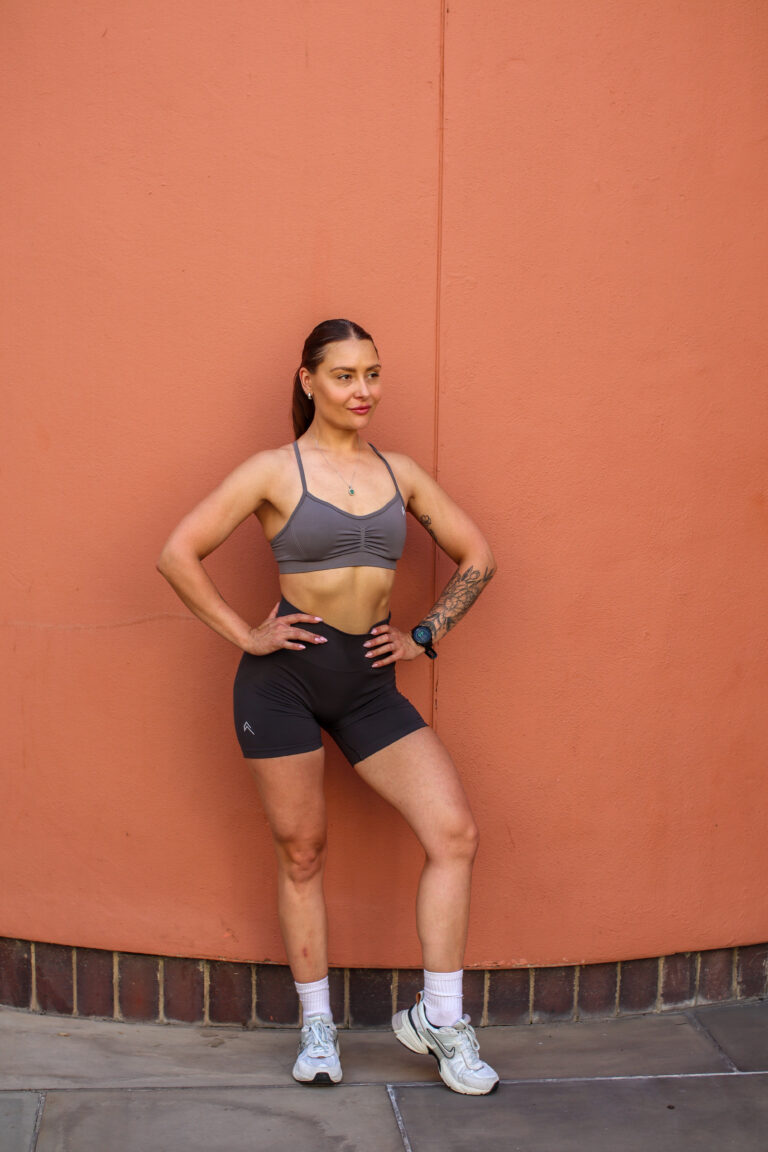
Understanding the Push/Pull/Legs and Core Split
The Science Behind the Split
The push/pull/legs (PPL) training split has gained widespread popularity among fitness professionals and enthusiasts due to its logical organisation and effectiveness for building strength and muscle mass. This approach divides exercises based on movement patterns and muscle groups, allowing for optimal recovery while maintaining training frequency [15].
The push day focuses on exercises that involve pushing movements, primarily targeting the chest, shoulders, and triceps. These muscle groups work synergistically during pushing motions, making it efficient to train them together. The pull day emphasises pulling movements that engage the back, biceps, and rear deltoids. Finally, the legs day targets the lower body, including the quadriceps, hamstrings, glutes, and calves.
Adding a dedicated core component to this split addresses one of the most important aspects of functional strength for women over 30. A strong core is essential for maintaining proper posture, preventing lower back pain, and providing stability for all other movements. By incorporating core training into each session, we ensure comprehensive development of this crucial muscle group.
Benefits for Women Over 30
The PPL split offers several advantages that make it particularly suitable for women in their thirties and beyond. First, the split allows for adequate recovery between sessions targeting the same muscle groups. As recovery capacity may decrease with age, this built-in recovery time becomes increasingly important for preventing overtraining and reducing injury risk [16].
Second, the split provides flexibility in scheduling, which is crucial for women balancing career, family, and personal responsibilities. The three-day-per-week frequency allows for consistent training without overwhelming time commitments, while still providing sufficient stimulus for strength and muscle gains.
Third, the movement-based organisation of the split promotes balanced development and reduces the risk of muscle imbalances that can lead to injury or postural problems. This is particularly important for women who may spend significant time in sedentary positions or repetitive movement patterns in their daily lives.
Equipment Selection and Versatility
The beauty of the PPL split lies in its adaptability to various equipment options. For this program, we focus on four primary equipment categories that are readily available in most gym settings: dumbbells, TRX suspension trainers, kettlebells, and standard gym machines. This equipment selection provides versatility while maintaining simplicity, allowing for effective workouts regardless of gym layout or equipment availability.
Dumbbells offer unilateral training opportunities, helping to address strength imbalances between sides of the body. They also provide a full range of motion and require stabilisation, engaging smaller supporting muscles that contribute to functional strength. TRX suspension trainers add an element of instability and bodyweight resistance, improving core strength and proprioception while providing scalable difficulty levels.
Kettlebells introduce ballistic and dynamic movement patterns that enhance power development and cardiovascular conditioning. Finally, gym machines provide stability and safety for heavier loads while allowing for precise muscle targeting and controlled movement patterns.

The Complete 3-Day Workout Program
Program Overview and Guidelines
This comprehensive strength training program is designed to be performed three times per week, with at least one day of rest between sessions. The program follows a push/pull/legs and core split, with each workout targeting specific movement patterns and muscle groups. Each exercise is performed for 4 sets of 10-12 repetitions, with rest periods optimised for strength and muscle development.
Weight Selection Guidelines:
•Choose a weight that allows you to complete 10-12 repetitions with good form
•The last 2-3 repetitions should feel challenging but achievable
•If you can easily complete 12 repetitions, increase the weight by 5-10%
•If you cannot complete 10 repetitions with good form, decrease the weight by 5-10%
Progression Strategy:
•Week 1-2: Focus on learning proper form and establishing baseline weights
•Week 3-4: Increase weights by 5-10% when you can complete all sets with 12 repetitions
•Week 5+: Continue progressive overload while maintaining proper form
Day 1: Push Day (Chest, Shoulders, Triceps, Core)
| Exercise | Equipment | Sets | Reps | Weight (lbs) | Rest Period |
| Dumbbell Bench Press | Dumbbells | 4 | 10-12 | 15-25 each | 90 seconds |
| Dumbbell Shoulder Press | Dumbbells | 4 | 10-12 | 10-20 each | 90 seconds |
| Chest Press Machine | Machine | 4 | 10-12 | 40-80 | 90 seconds |
| Dumbbell Lateral Raises | Dumbbells | 4 | 10-12 | 5-15 each | 60 seconds |
| TRX Chest Press | TRX | 4 | 10-12 | Bodyweight | 60 seconds |
| Dumbbell Tricep Extensions | Dumbbells | 4 | 10-12 | 8-15 each | 60 seconds |
| Kettlebell Overhead Press | Kettlebell | 4 | 10-12 | 15-35 | 90 seconds |
| Plank Hold | Bodyweight | 4 | 30-60 sec | Bodyweight | 60 seconds |
Push Day Focus: This workout emphasises pushing movements that target the chest, shoulders, and triceps. The combination of free weights and machines provides variety while ensuring progressive overload. The TRX chest press adds an element of instability that engages core muscles, while the kettlebell overhead press develops functional pressing strength.
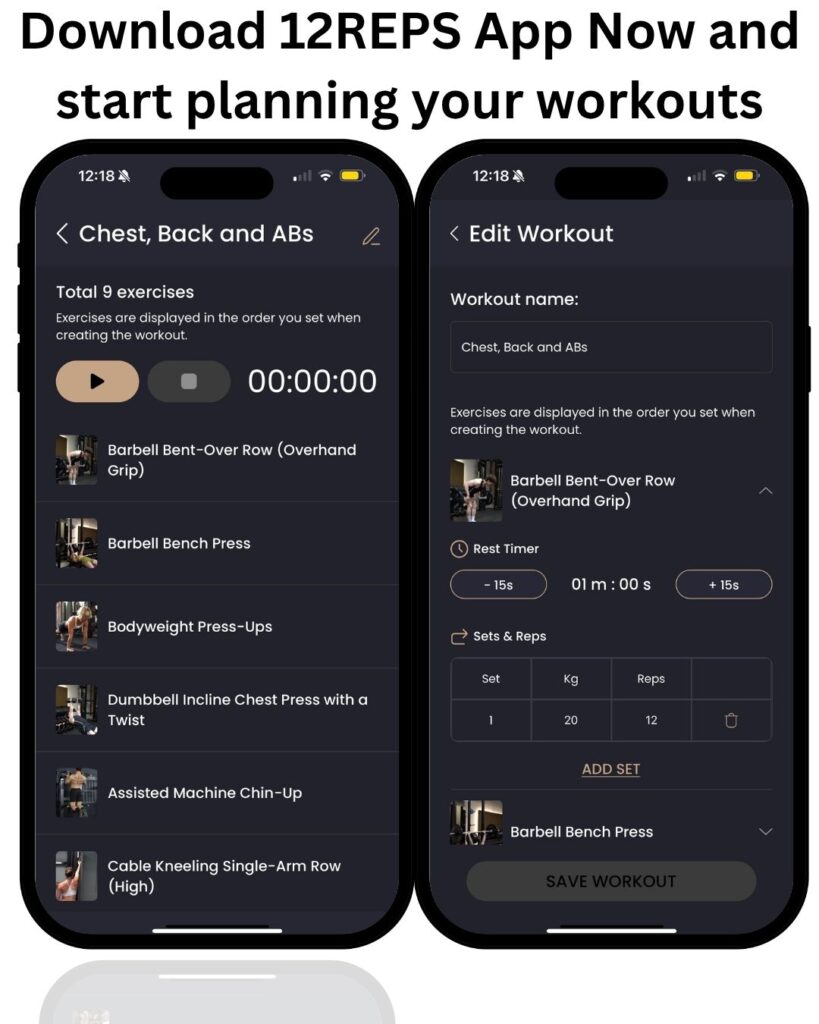
Day 2: Pull Day (Back, Biceps, Rear Delts, Core)
| Exercise | Equipment | Sets | Reps | Weight (lbs) | Rest Period |
| Lat Pulldown Machine | Machine | 4 | 10-12 | 50-90 | 90 seconds |
| Dumbbell Bent-Over Rows | Dumbbells | 4 | 10-12 | 15-30 each | 90 seconds |
| TRX Inverted Rows | TRX | 4 | 10-12 | Bodyweight | 60 seconds |
| Dumbbell Bicep Curls | Dumbbells | 4 | 10-12 | 8-20 each | 60 seconds |
| Cable/Machine Seated Rows | Machine | 4 | 10-12 | 40-80 | 90 seconds |
| Dumbbell Reverse Flyes | Dumbbells | 4 | 10-12 | 5-12 each | 60 seconds |
| Kettlebell High Pulls | Kettlebell | 4 | 10-12 | 20-40 | 90 seconds |
| Russian Twists | Kettlebell | 4 | 10-12 each side | 10-25 | 60 seconds |
Pull Day Focus: This session targets all major pulling muscles, emphasising back development and bicep strength. The variety of angles and equipment ensures comprehensive back development, while the kettlebell high pulls add a dynamic, power-building element. Core training is integrated through Russian twists using a kettlebell for added resistance.
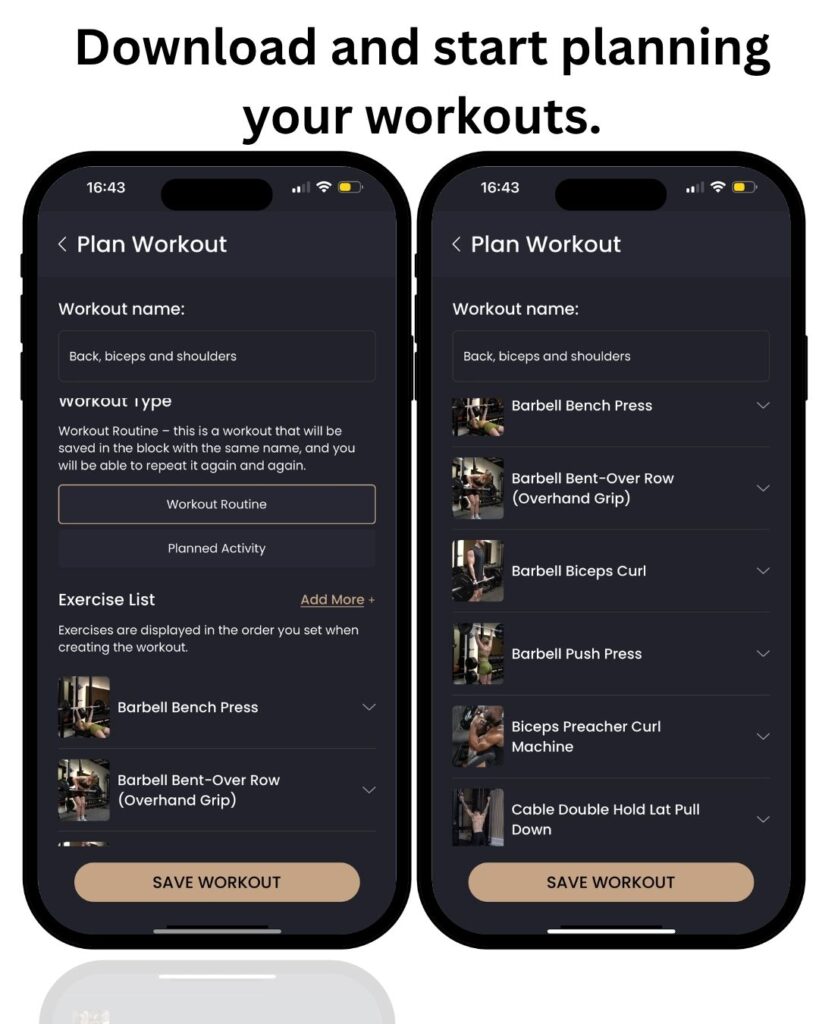
Day 3: Legs and Core Day (Quadriceps, Hamstrings, Glutes, Calves, Core)
| Exercise | Equipment | Sets | Reps | Weight (lbs) | Rest Period |
| Dumbbell Goblet Squats | Dumbbells | 4 | 10-12 | 25-50 | 90 seconds |
| Leg Press Machine | Machine | 4 | 10-12 | 100-200 | 90 seconds |
| Dumbbell Romanian Deadlifts | Dumbbells | 4 | 10-12 | 20-40 each | 90 seconds |
| TRX Pistol Squats (Assisted) | TRX | 4 | 10-12 each leg | Bodyweight | 60 seconds |
| Kettlebell Swings | Kettlebell | 4 | 10-12 | 25-50 | 60 seconds |
| Dumbbell Walking Lunges | Dumbbells | 4 | 10-12 each leg | 10-25 each | 90 seconds |
| Calf Raise Machine | Machine | 4 | 10-12 | 80-150 | 60 seconds |
| TRX Mountain Climbers | TRX | 4 | 10-12 each leg | Bodyweight | 60 seconds |
Legs and Core Focus: This comprehensive lower body workout targets all major leg muscles while incorporating significant core engagement. The combination of bilateral and unilateral exercises ensures balanced development, while the kettlebell swings provide cardiovascular benefits and posterior chain strengthening.
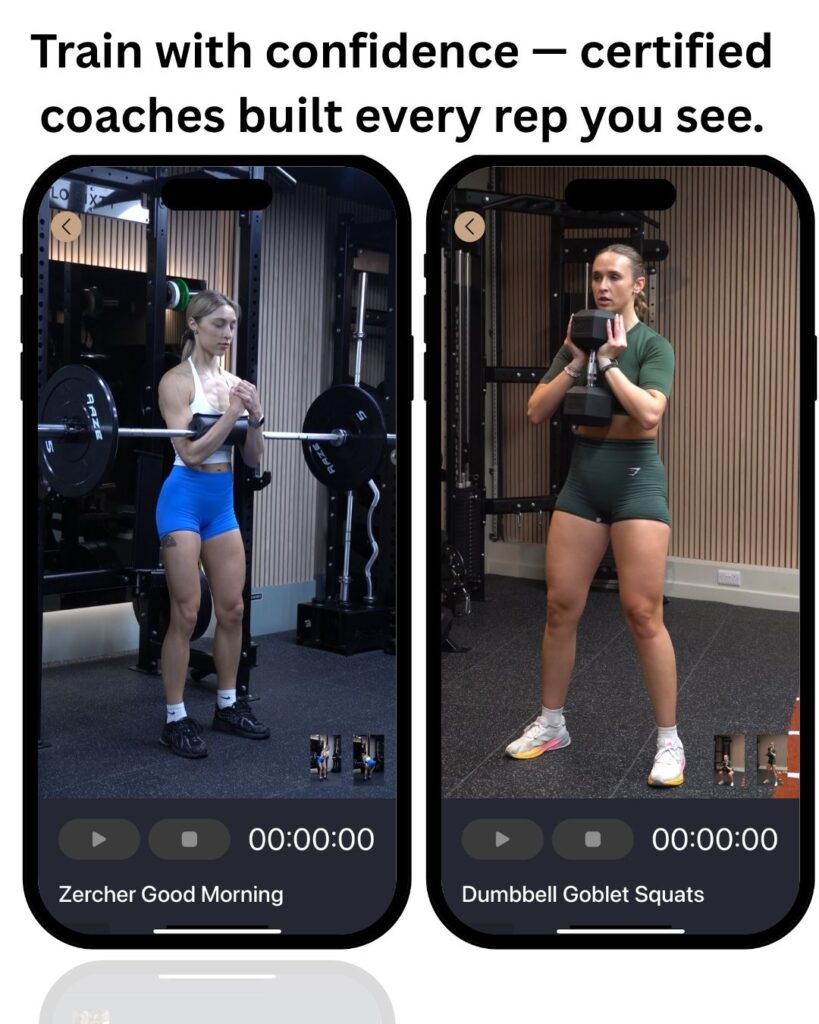
Program Implementation and Progression
Week-by-Week Progression Strategy
Weeks 1-2: Foundation Phase During the initial two weeks, focus primarily on learning proper exercise technique and establishing baseline strength levels. Start with lighter weights that allow you to complete all repetitions with perfect form. Use this time to familiarise yourself with the 12Reps app interface and video demonstrations for each exercise.
Weeks 3-4: Adaptation Phase As your technique improves and your body adapts to the training stimulus, begin implementing progressive overload. When you can complete all 4 sets of 12 repetitions with good form, increase the weight by 5-10% for the following session. The 12Reps app will help track these progressions and suggest appropriate weight increases.
Weeks 5-8: Development Phase. Continue with progressive overload while paying attention to recovery and form quality. You may find that some exercises progress faster than others, which is completely normal. The app’s AI algorithms will help identify these patterns and adjust recommendations accordingly.
Weeks 9-12: Mastery Phase By this point, you should have established a strong foundation and be seeing significant improvements in strength and muscle tone. Consider incorporating advanced variations or additional exercises as suggested by the 12Reps app based on your progress and goals.
Recovery and Nutrition Considerations
For women over 30, recovery becomes increasingly important for maximising training adaptations and preventing overuse injuries. Ensure you’re getting 7-9 hours of quality sleep per night, as this is when muscle protein synthesis and hormonal recovery occur most effectively.
Nutrition plays a crucial role in supporting your strength training goals. Aim for adequate protein intake (0.8-1.2 grams per pound of body weight) to support muscle protein synthesis and recovery. Don’t neglect carbohydrates, as they provide the energy needed for intense training sessions. The timing of meals around workouts can also impact performance and recovery, with a combination of protein and carbohydrates consumed within 2 hours post-workout being optimal for muscle adaptation.
Modifications and Adaptations
One of the greatest strengths of the 12Reps app is its ability to provide exercise modifications based on individual limitations, preferences, or equipment availability. If you experience any discomfort or have previous injuries, the app can suggest alternative exercises that target the same muscle groups while accommodating your specific needs.
For women dealing with hormonal fluctuations, energy levels may vary throughout the menstrual cycle. The app’s flexibility allows for intensity adjustments based on how you’re feeling on any given day, ensuring that you can maintain consistency without compromising recovery or well-being.
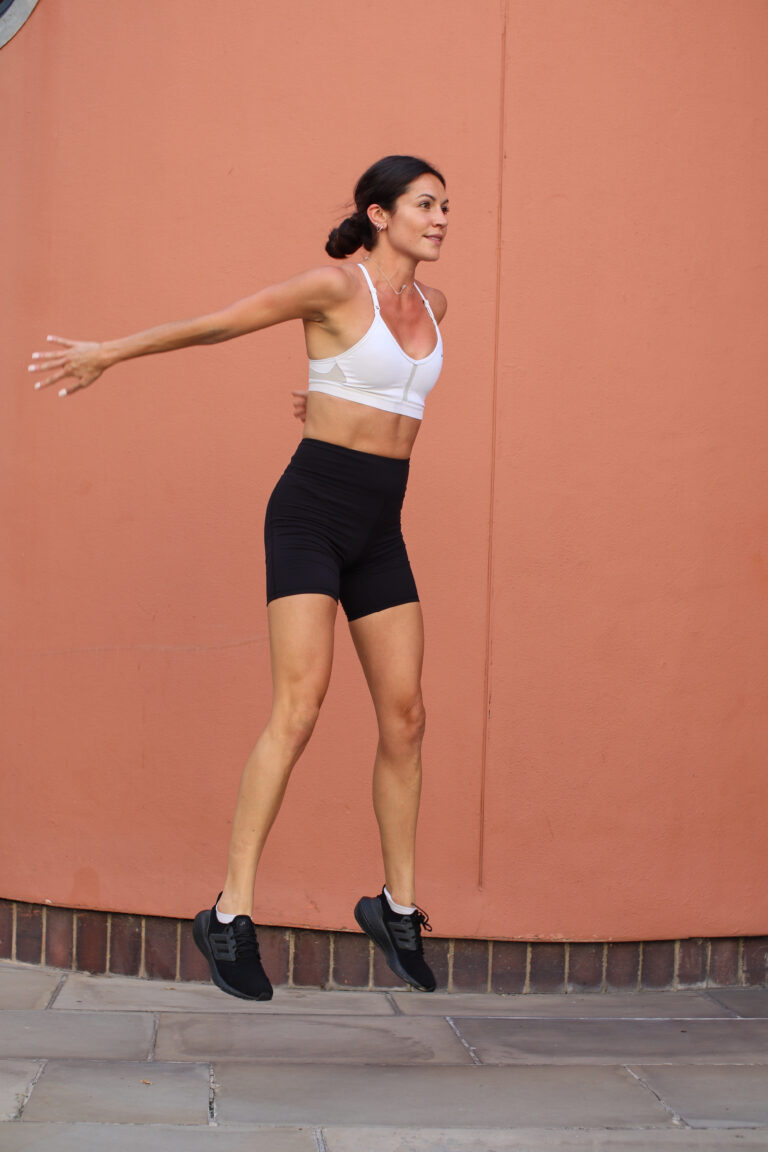
Conclusion
This comprehensive strength training program, powered by the innovative 12Reps app, provides women over 30 with a scientifically-backed approach to building strength, preserving muscle mass, and enhancing overall health. The push/pull/legs and core split offers an efficient and effective training structure that accommodates busy lifestyles while delivering significant results.
The combination of dumbbells, TRX, kettlebells, and machines ensures variety and progression opportunities, while the app’s AI-powered features provide personalised guidance and tracking capabilities. By following this program consistently and allowing for appropriate progression, women can expect to see improvements in strength, body composition, bone density, and overall quality of life.
Remember that strength training is a journey, not a destination. The habits and strength you build now will serve as the foundation for lifelong health and vitality. With the 12Reps app as your guide and this comprehensive program as your roadmap, you have everything needed to achieve your fitness goals and maintain them for years to come.

References
[1] https://www.uhhospitals.org/blog/articles/2024/04/the-unique-benefits-of-strength-training-for-women
[10] https://www.rbxactive.com/blogs/fitness/the-importance-of-weightlifting-strength-training-for-women-over-30 [11] https://www.nebraskamed.com/primary-care/strength-training-for-women-has-many-benefits-and-its-never-too-late-to-start
[14] https://ptwill.com/blog/best-strength-training-app-transform-your-workouts-transform-your-life/

